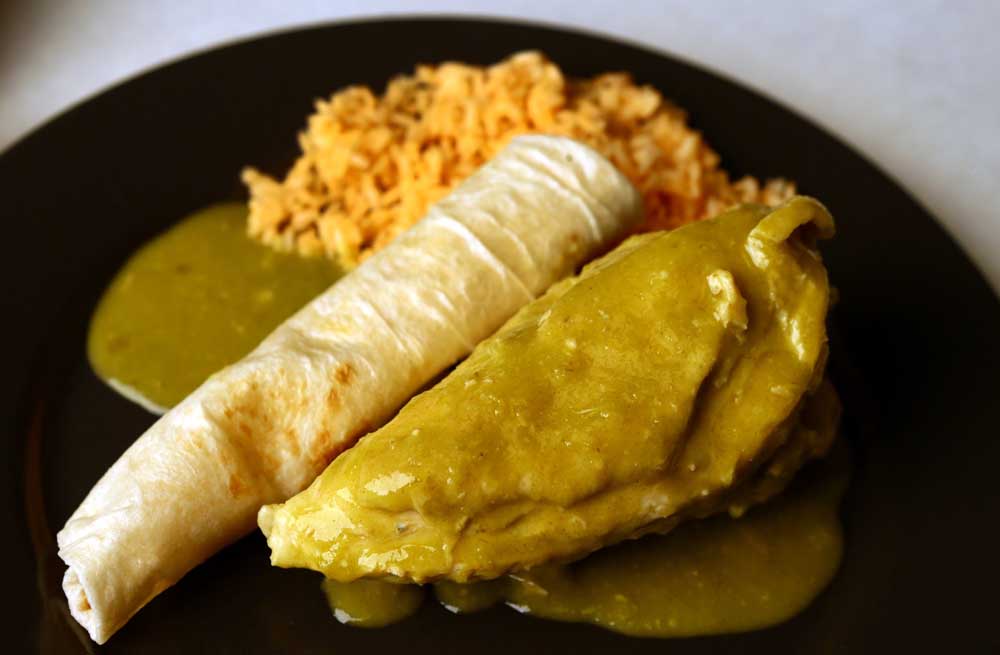The world of cilantro
Published 12:00 am Tuesday, August 11, 2015

- Photos by Robert Cohen / St. Louis Post-Dispatch / TNSGreen mole sauce — mind-blowingly superb, especially with chicken.
In the Bible, the manna that fell from heaven to feed the Israelites on their journey out of Egypt was described as being like coriander seeds.
Or to put it another way, the seeds of the cilantro plant.
One plant. Two names.
What is commonly known as cilantro are the leaves and stems of the plant; the seeds, which have a completely different taste, are called coriander.
But that’s just in America. Throughout Europe, the whole plant is generally referred to by some variation on coriander (koriandr in Czech, coriandolo in Italian). But it’s cilantro in Mexico and Spain.
In Mandarin Chinese, it’s yuen sui and in Vietnamese it’s ngo. Which proves the worldwide popularity of this plant.
And yet, it was little known in America just 40 years ago.
Cilantro closely resembles Italian flat-leaf parsley in appearance but has a much brighter, fresher taste and an intoxicating aroma (though some people, for genetic reasons, can’t stand it). It can be used in any kind of savory dish, from soups to salads to entrees — while the seed, coriander, is even good in baked goods and desserts.
There is really only one rule to remember when cooking with cilantro: It loses its potent flavor quickly when exposed to heat, so it is always best to add it in the last few minutes of cooking.
I made three different dishes featuring cilantro, and not one of them involved adding cilantro in the last few minutes of cooking. Call me a rebel.
One of the dishes uses cilantro only as part of an uncooked sauce, adding its vibrant green color as well as its clean taste. The cilantro is the primary ingredient in a chimichurri, a South American sauce usually made instead with parsley.
Try it with the cilantro. When blended with garlic, peppers, lime juice, vinegar and olive oil, it becomes a multipurpose, one-size-fits-all sauce that goes with many other dishes (rice, pasta, potatoes) beyond the traditional grilled meat.
I used it with grilled meat. Call me a traditionalist — one of those rebel traditionalists you hear so much about these days.
Besides, the meat I used was kind of untraditional. I made lamb chops that I marinated in a Chinese marinade and rubbed with a spice mix drawing elements from India or Mexico.
It was delicious. The simple marinade brought out the natural flavor of the lamb, which was then accented by the heady spice mix. The full-flavored sauce exponentially increased the pleasure, kicking the dish into the stratosphere.
I thought cilantro couldn’t get any better than that, but I was wrong.
I made a cilantro and ginger hummus that was so addictive one co-worker accused me of making crack. Another co-worker, who fancies herself the definitive expert on hummus, explained in no uncertain terms that what she was eating was not, in fact, hummus, because it tasted of cilantro and ginger.
Mind you, she couldn’t get enough of it.
And this hummus (or cilantro-flavored chickpea spread, as the expert insisted it be called) is deceptively easy to make. You just throw a handful of ingredients into a food processor and whip it together until done.
I added one preparation that made it as smooth as silk, and it probably took less than 15 extra minutes — though that is more time than it took to make the rest of it: I peeled the chickpeas.
They were canned, so it was easy (I’ve also peeled them when I cooked them myself, but that is much more work). The beans pop right out of their clear skins, and it makes a world of difference in the final product.
On the other hand, the best hummus I’ve ever had is made at a Lebanese restaurant in Toledo, Ohio, and I asked the owner if he peels the chickpea skins. He said no.
Finally, I made a chicken dish that may actually be my favorite of the three, though that is stiff competition. It takes more time and effort than the other two, but I’m sure you will agree that the results are well worth it.
A mole is a thick sauce popular in Mexico, and the kinds that are most familiar in this country, from the Mexican states of Oaxaca or Puebla, tend to be highly complex and take forever to make. They also tend to be enriched with ground nuts.
This version, however, is from the state of Zacatecas, which is farther north. It’s a green mole, made with fresh tomatillos along with the cilantro, and it is lighter in concept than the others, though just as flavorful.
This sauce is made partly from a cilantro broth that is used to simmer the chicken. One especially enticing byproduct of the dish is that you end up with about two quarts of this incredible chicken-cilantro broth.
The mole is superb; it is mind-blowingly superb; it is unlike anything you have ever tasted.
But now I can’t wait to use that broth.







